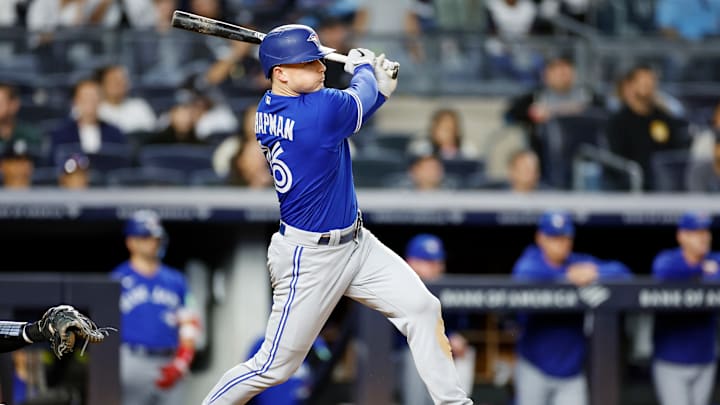The SF Giants are reportedly one of the favorites for third baseman Matt Chapman. He is a well-rounded player but there are concerns about his offensive decline in recent seasons. Are those concerns valid?
Is SF Giants free-agent target Matt Chapman's bat really on the decline?
You can pretty much draw a line in the sand between the first half of Chapman's career where he was a legitimate MVP candidate and the second half where he is still a solidly above-average player. Through the first three seasons of his career, the righty bat slashed .257/.341/.500 (127 wRC+) with a 10.1 percent walk rate, 23.9 percent strikeout rate, and a .243 ISO.
Not only was he a superb defensive player at third base, winning a Gold Glove in two of his first three years, but he was an excellent hitter as well. That combination is reminiscent of the early part of Evan Longoria's career or Nolan Arenado. Chapman was a star in the making and had put together Hall of Fame-caliber seasons early in his career.
At the end of 2018, the 30-year-old underwent shoulder surgery. He made a full recovery and had one of the best years of his career in the following season. That said, Chapman just has not been the same hitter over the past four seasons. There is not necessarily a connection between the surgery and Chapman's decline, I mention it because the shoulder surgery is just a narrative of his career thus far.
Since the start of 2020, the right-handed hitter posted a .226/.319/.430 line (110 wRC+) with an 11.0 percent walk rate, 29.9 percent strikeout rate, and a .203 ISO. On the surface, there has been a clear decline in his numbers.
The strikeout rate has spiked. The slugging percentage has dipped. These are not trends that you want to see with a 30-year-old hitter, especially someone who will land a contract well in excess of $100 million.
However, there are often two sides to the story. And, for Chapman, the overall numbers are seemingly in contrast with his process stats, which are quite good. In 2023, he was in the 90th percentile or better in average exit velocity (93.4 MPH), maximum exit velocity (114.3 MPH), barrel rate (17.1 percent), and hard-hit rate (56.4 percent).
Chapman's maximum exit velocity would have been the fourth-highest mark on the Giants last season. He would have comfortably led the Giants in average exit velocity, barrel rate, and hard-hit rate. The Giants had a below-average lineup, so this is not terribly surprising.
Perhaps, the easiest fix might be for Chapman to lower his launch angle. He had an average launch angle between 18 - 20 degrees over the past two seasons, but he was closer to 14 - 16 degrees in his peak seasons. This has led to more fly balls in recent seasons with a corresponding decrease in line drives. Line drives fall for hits at a far higher rate than any other batted-ball type.
Another issue is that he had the second-lowest pull rate of his career at 39.3 percent. For someone who will be entering his age-31 season next year, it's something to monitor because is suggests a decline in bat speed. Though, he continues to hit fastballs well as he tallied a .251 batting average and a .466 slugging percentage last year. If his bat speed was really slowing down, his performance against velocity would be a notable red flag.
So, is there a concern with Chapman's offensive decline? Yes, as much as we put weight into the process stats, the surface-level numbers still hold more weight. And, you cannot really hang your hat on process stats if you are making $20 million or more a year.
However, he still hits the ball well and better than most hitters in baseball. That type of player does not grow on trees. Perhaps, he is one tweak away from rediscovering the form from earlier in his career. There are still plenty of encouraging trends with how he is hitting the ball even if the overall numbers do not match.
